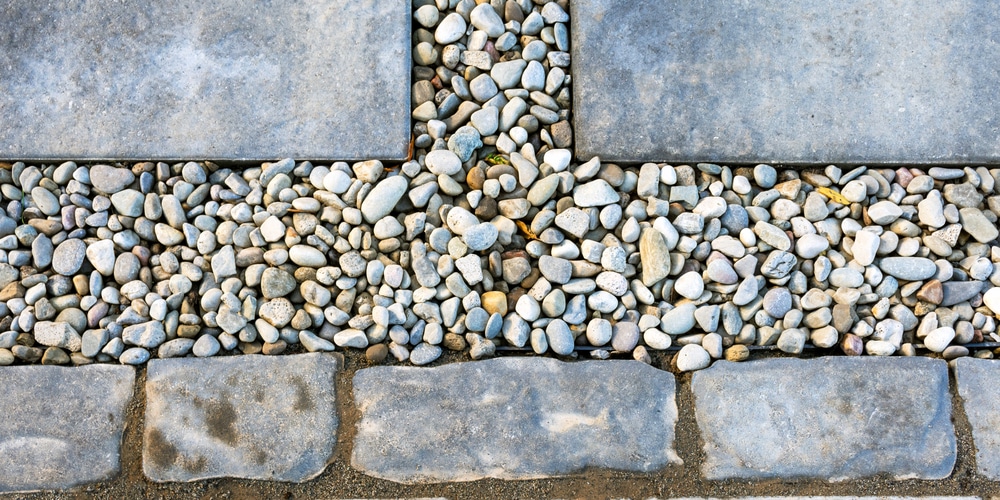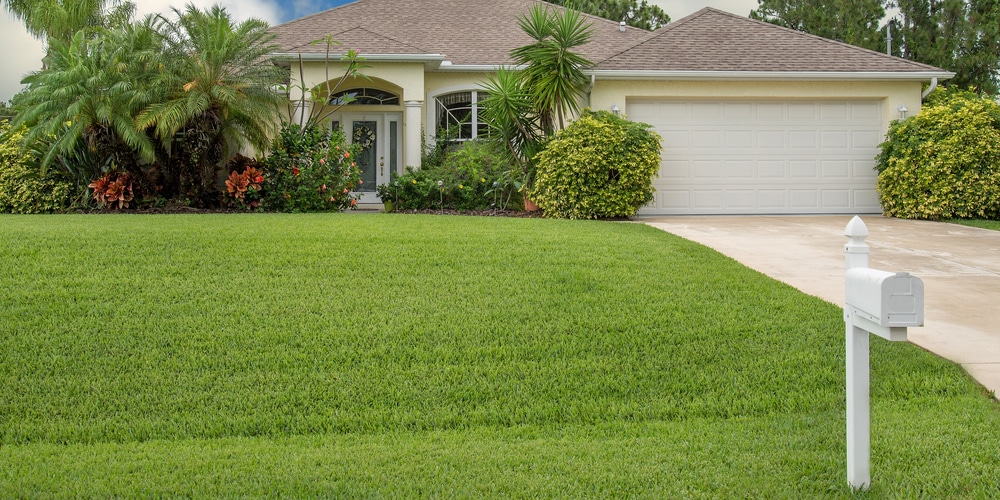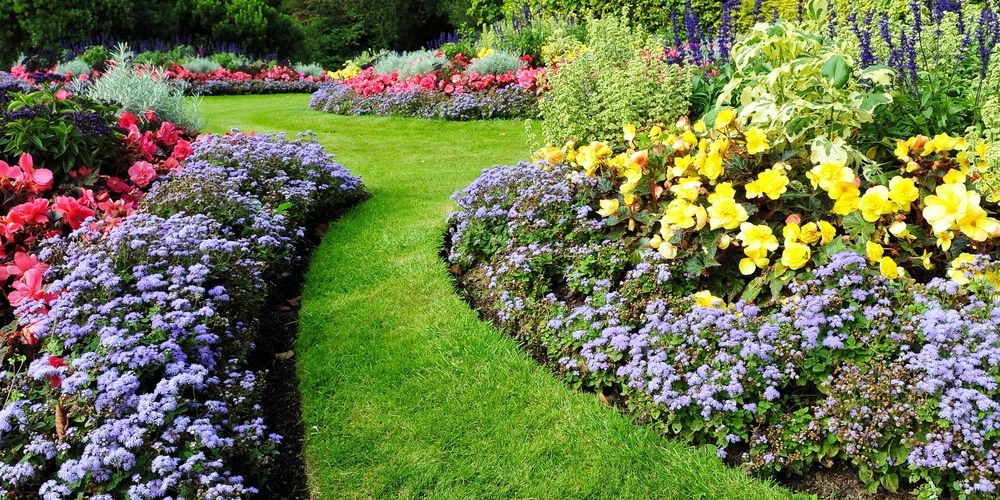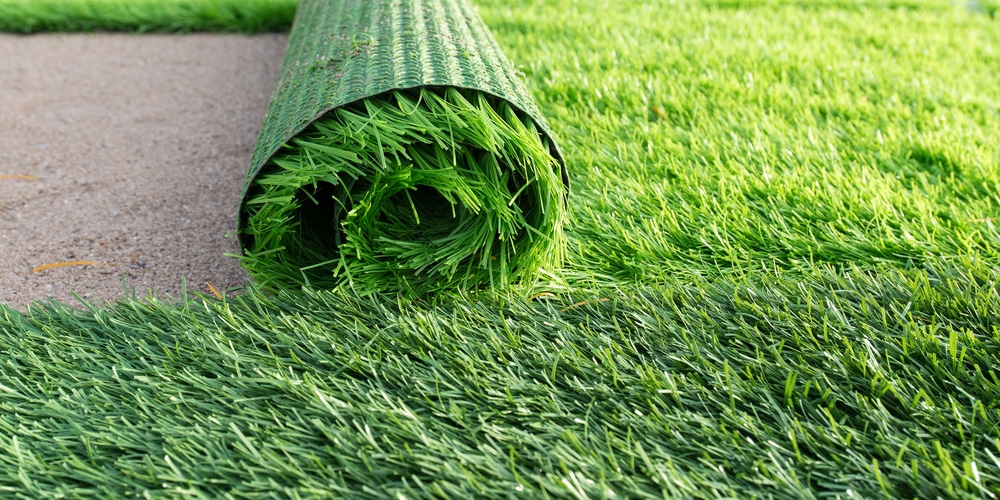If you don’t live in areas that allow for lush green gardens, you don’t have to despair. While you might not be able to have the “lawn of your dreams,” you still have the option to create a stunning yard. You can choose from several landscaping tips to create a yard that will do well even in drought conditions (without looking unhealthy). Let’s look at how to create a low maintenance drought tolerant front yard!
While green grass lawn can look nice, it is high-maintenance and requires lots of water (and sometimes chemicals). If you live somewhere where regular rainfall is not a thing, you don’t have to ditch the idea of having a garden. Instead, you can create a stunning low maintenance drought tolerant front yard. To prevent having unappealing lawns where water restrictions are a thing, you must consider different options.
To get some inspiration, read our essential guide. Here, we collected some of our favorite ways you can create a yard that withstands drought conditions and doesn’t require much attention from your side. The good news is that such a garden doesn’t have to be boring: as you will see, there are plenty of things you can do to make your front yard more attractive, even without wasting tons of water.
Add Some Decomposed Granite or other Decorative Stones

If you want to create a unique front yard, add some decomposed granite. This crumbly rock binds together and doesn’t create dust. Instead, it can help you create fun landscapes without having to pave. It does well in driveways, patios, or even pet spaces. One of the best things is that it can help you filter pollutants from water, contributing to overall healthier plants in your garden. You can use decomposed granite instead of mulch to increase water retention and improve nutrient absorption in your plants and trees.
Other decorative stones can also help you make your front yard more attractive. Plus, they require zero maintenance. With the suitable types, you can create walkways, or stunning backdrops for your plants, to enhance their beauty and provide them with proper conditions to thrive. For instance, the smooth-looking river rock comes in various sizes and different shades, which can help you recreate a jungly environment with little effort.
Pea gravel is another excellent option to substitute your lawn with something more economical but aesthetically appealing. You can mix and match different shapes, sizes, and depths of gravel. Use it integrated with other rocks in your yard for even better results.
Groundcovers
Alternatively, you can add a groundcover and select plants that will add a splash of color to your front yard while preventing soil erosion. Before picking plant varieties for this purpose, ensure you know how to meet their soil and sun requirements. If your garden gets lots of sunlight, consider planting rockroses around your lawn. They will produce beautiful blooms in the spring and require little to no care. Otherwise, if your conditions are shadier, you can add creeping barberries all over: their bright yellow flowers will attract plenty of beneficial pollinators to your garden during the spring.
Native Grasses
One of the best ways to have a low maintenance drought tolerant front yard is to add native grasses. You can mix different varieties to make your garden more attractive and unique. The visual effect of planting several native types of grass will surprise you. Also, you can unleash your creativity and group them depending on height, color, or density.
Play with textures and make sure you can meet your grass’s requirements. Look for species native to your region to make sure they can thrive in your weather conditions without needing much attention from your side. Maidengrass, Blue panic, and Pampas grass perform well in hardiness zones between 9 and 11.
Flowerbeds
Contrary to what you may think, it is possible to have flowerbeds even in drought conditions. All you have to do is select species that thrive in warm temperatures and even with little water. Creating a flower bed can make your garden more elegant and attract pollinators such as bees, butterflies, and hummingbirds, which will make your yard lively and bright.
You can add coneflowers, which withstand several soil and temperature conditions, and add a delicate splash of color during the warmer months. Alternatively, you can select your favorite variety of bearded iris, which comes in different colors and shapes, or even of Autumn Joy. All such plants make for perfect flower beds and will make you forget about water restrictions. When choosing the right plant, your garden can look stunning, even when it seems to be too dry to grow anything!
Artificial Turf
If you can’t think of your front yard without a lawn, you can consider adding artificial turf. It doesn’t require water, and it is low-maintenance: you won’t need to mow it or buy fertilizer and pesticides! However, installing artificial turf can be expensive, especially if purchasing a high-quality type. Also, it might look too perfect, which can make your front yard boring.
Related Article: Artificial Grass Vs. Sod
Native Plants
Besides adding native grasses, another way to ensure your plants will tolerate your climate is to get native species. If you live in areas where drought is the norm, you will be able to find plenty of species that will thrive even without water and will still look good in your garden. Depending on where you live, the selection might change.
Evergreen shrubs that can tolerate warm temperatures can be the ideal option to add some texture and color to your yard without taking much care of them. For hardiness zones between 9 and 11, consider planting some manzanitas. Coyote brush is another excellent option: it will give you blooms when most other plants are dormant. Plus, it will add some greenery to your garden, which can come in handy in dry conditions.
Low Maintenance Drought Tolerant Front Yard: The Bottom Line
You have plenty of ways to create a drought-tolerant front yard on your property without it looking unappealing. Indeed, despite what many people think, many plants thrive even in the harshest conditions and still look delicate and colorful. Think about your objectives and select plants (or decorative rocks) accordingly. Consider mixing different species for getting stunning results and attractive landscapes.


